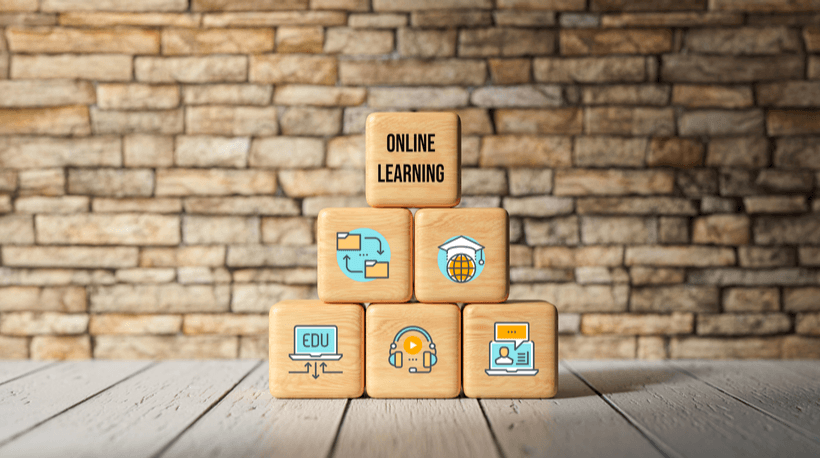Learners' Needs And Curricular Constraints
You are very aware of your learners’ needs and yet there is only so much curriculum time available to teach or coach them. Teach less, learn more. Spend more time on feedback and spaced practice—that’s how learners learn.
Many trainers would agree that we understand learners’ needs and yet we are also aware of constraints in terms of time, resources, and energy. I teach communication skills in my institution and to address the issues above, we embarked on developing original eLearning modules. The term e-module is used rather than e-resources in this article as each module consists of multiple topics and types of e-resources. The e-modules that have been developed by my department include English Quest (a grammar application), managing meetings, interpersonal skills, career and professional development, writing business emails, and technical writing. These e-modules are made available to learners in the Learning Management System for the entire duration of the learners’ candidature in the institution. Thus, learners can access the e-modules prior to or after completion of their required credit-bearing communication skills module according to their needs.
Why Develop Original eLearning Modules?
There is a vast array of communication skills e-resources available. We could insert these e-resources into our teaching materials and use them immediately or filter and collate them with clear learning outcomes in mind into a package. However, as Subject Matter Experts (SME) who know and understand our learners’ needs in the context that they will be operating in the workplace, my department decided to produce customized e-modules that could meet those needs. Training in communication skills requires lots of feedback and practice, a luxury that curriculum time seldom permits. If students could go through the e-module which includes simple activities before class, more time could be spent on giving feedback to students as they perform more complex activities in class (blended approach). Furthermore, standalone e-resources can be reused and repackaged to fit evolving needs for different groups of students with ease, incurring a one-off development cost and no copyright issues to clear.
I would like to share some of the lessons learned in the development of these original eLearning modules as a Subject Matter Expert in communication skills and project manager for these e-modules.
Development Tips
1. Bring The Workplace Into The Curriculum Early
The relevance of the content in the e-module to the task to be performed in the workplace is a prime motivator for learners’ learning. A collaboration between a corporate expert and trainer who knows the needs of the learners first-hand would be ideal. Informal chats on what are the common skills gaps seen in the workplace in a particular industry could draw attention to key areas that should be the focus of the eLearning module. Alternatively, if a corporate expert is not available, a good starting point to write eLearning modules is to make a list of “Frequently Asked Questions” learners have on the topic and to consider how to respond to these questions in a clear and memorable manner. Remember, eLearning resources are not meant to be comprehensive as a textbook. They are meant to meet learners’ immediate needs.
2. Map The Learning Outcomes
Map the learning outcomes for all the topics in the eLearning module before each topic is elaborated on further. Clear learning outcomes need to be stated for each topic to keep it focused. The learning outcomes for all the topics could then be weaved into a single storyline to help learners connect the dots from one topic to another. Whether learners are given a free choice to select the topic to be covered or forced to complete the topics in an ordered sequence, the storyline makes the learning journey explicit to learners. The decision as to whether learners need to cover all the topics in the eLearning module or as they like needs to be made early. A rewards system within the eLearning module (for example, unlocking a toolbox of resources or a badge), a graded assignment, or workplace requirement could be considered to motivate learners in continuing their learning journey.
3. Chunk The Resources
Learners in the eLearning space have short attention spans. Each topic needs to be written in bite-sized pieces rather than presented in a narrative manner like an article. A variation in the flavor in each chunk could keep the learning interesting. For example, in a module on writing business emails, there could be a topic on writing email chasers. The first section in this topic could focus on writing emails to chase for work updates, executed using animated video with pauses for activities like MCQs and jigsaw puzzles (about four minutes long); the second section could focus on writing diplomatic emails to bosses, executed using simple animation with graphics (about four minutes long); while the third section could focus on tips to ensure that the email was written in the right tone, executed using pure animated video (about one minute long).
4. Insist On Storyboards
Manuscripts (written scripts for each topic) need to be developed into e-resources. The first stage of this development is the storyboard (a sequence of drawings on how the software version of the content in the manuscript will look like). Insist on receiving storyboards from developers to address any differences in perceptions (color scheme, character drawings, etc.) on how each e-resource deliverable should look like. Clear communication between the developer and SME in this early stage of development is important as revisions in subsequent stages of development take more time. This is because there would be more components to unpack and repack for any revisions to be affected.
5. Test Early And Continuously
Once the storyboard for the first topic has been approved, a prototype could be developed and tested in the platform that the e-module is going to be hosted in (the storyboarding process for the rest of the topics continues). The prototype is typically tested by software developers to verify the functions of the prototype. However, SMEs could offer perspectives that go beyond the functions to issues regarding data reporting and feedback. For example, there might be practice activities and graded activities in a single topic. The SME would like to capture learners’ scores in the practice and graded activities. However, a single SCORM object can only be associated with one grade item. If there are multiple graded activities to be captured, multiple SCORM objects will need to be created. A decision then needs to be made on how to resolve the mismatch. The tested and approved prototype for the first topic could then serve as a template for the rest of the topics.
6. Operational Issues After Roll-Out Need To Be Considered
Each e-module was initially rolled out to learners in separate course sites at a rate of one e-module per year (it’s time-consuming). However, as more e-modules were rolled out, it was very difficult to keep track of learner enrollment. Learners also had to go to different course sites to perform different tasks, making the enrollment process cumbersome. Thus, a decision was made to consolidate all the e-modules into a course site in the Learning Management System. This proved to be a sane and logical thing to do.
The development of standalone original e-modules has served to build a core set of e-resources that are reusable for various purposes. Future use of other readily available e-resources is welcomed to supplement this core set of resources.









